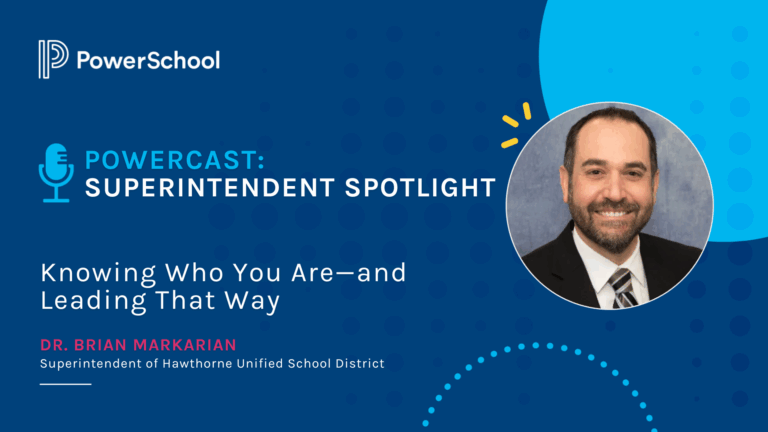By Stephanie Pierce, Ed.D.
With the effect of the pandemic, many women leaders are feeling overwhelmed, overextended, and exhausted with the many responsibilities from work to managing family issues. In the past three years, the women’s workforce has been changing due to these many pressures. In education, our workforce includes many women working toward balancing all these pressures and we are confronting ways to recruit and retain more women leaders in the educational workforce. It is imperative that we find creative ways to support women leaders.
The Center for Creative Leadership found in their research that organizations that prioritize initiatives with a focus on equity, diversity, and inclusion provide an organizational culture that values women’s leadership contributions. In their research, they identified four themes that collectively reveal a more complex picture of successful women and offer insight and reflection opportunities for women navigating an educational leadership journey.
Developing Agency
First of the four themes includes developing agency. Agency involves setting specific goals to help you improve and achieve satisfaction and feel like you are moving your career in the right direction. In education, we are familiar with the SMART goal process applied to attaining improved student outcomes. The SMART goal means Specific, Measurable, Achievable, Relevant, and Time-Bound.
In this situation, it is designing a SMART personal goal that aligns with your values, career, self, family, spirit, and broader community. We can achieve this by allowing time for reflection, focus, planning, getting support and revisiting or assessing our goal. Focus is the design of the goal. Develop a plan by breaking the goal into reasonable benchmarks. Seek support through coaches and mentors. Provide time to assess how you are doing on this goal by revisiting your progress toward your goal. It is also essential to build in this reflection time to address any challenges or barriers along the way. This process isn’t linear. It tends to be very fluid and can lead one to turn intentions into a reality. ACSA provides various opportunities to advance your career and they offer supports in attaining your career goal including ways to inspire educational leaders.
Authenticity
The second theme is authenticity. Authenticity is being self-aware — that is, understanding yourself and your relationship to others. Further, it is demonstrating genuineness and humility. Brené Brown describes authenticity as facing our imperfections with courage and vulnerability. We must fundamentally believe we are worthy of acceptance.
Successful women leaders share in others’ success, and they celebrate the team’s accomplishments. They also exhibit empathy and ethics. Empathy and ethics give you the ability to align your decisions with integrity. It allows you to support others and remain committed to what you believe is right. A focus on results empowers you to create a future and encourage others to understand and see your vision as clearly as you do. According to Ruderman and Rogolsky (2014), highly authentic women leaders can articulate their choices and tradeoffs that they have made when taking on new leadership roles or leaving a job. They can share how they have handled parenting and leadership responsibilities, switching careers, setting goals and achieving balance.
Building Connections
The third theme is building connections and what is known in emotional intelligence (EI) research as relationship management. Goleman et al. (2002) suggested that leaders who demonstrate relationship management can connect with others and develop positive relationships. Individuals high in EI treat others with compassion, sensitivity and kindness.
The relationship management cluster consists of five competencies, which includes inspirational leadership, influence, coach and mentor, conflict management, and teamwork. Inspirational leadership involves crafting a shared mission and vision in a way that inspires others to follow. Influence refers to the ability of a leader to persuade people in a variety of situations. This influential leader challenges the status quo when change is necessary, and these leaders make compelling arguments that convince others in the face of opposition. Coach and mentor demands showing a genuine interest in people and helping them understand their goals, identify their strengths and weaknesses, and provide feedback. Conflict management involves understanding differing perspectives and acknowledging the feelings of all sides, while working toward resolving disagreements. Teamwork and collaboration refer to generating an atmosphere of cooperation. Leaders who encouraged building bonds were models of respect and helpfulness, and they fostered a strong commitment and a collective effort toward shared organizational goals with a team spirit (Goleman et al., 2002). Social networks provide the connections from one person directly to another person, and this structure can include even more connections to even more people. ACSA provides many options for career networks including coaching and mentoring that serves as a support system. Our local ACSA regions provide even more opportunities to network, network and network.
Wholeness
The fourth theme is wholeness — the importance of having a life beyond work and a broader definition of success. It involves valuing all your commitments. Wholeness is about setting priorities, discerning commitments, and setting boundaries. One of the most difficult components of setting boundaries is saying no to roles and obligations that no longer serve you. Wholeness is about accepting all of you in times of difficulty, sadness and happiness. Brené Brown refers to this as living a wholehearted life. Dr. Brown defines wholehearted living as:
“Wholehearted living is about engaging in our lives from a place of worthiness. It means cultivating the courage, compassion, and connection to wake up in the morning and think, no matter what gets done how much is left undone. I am enough. It’s going to bed at night thinking, yes, I am imperfect and vulnerable and sometimes afraid but that doesn’t change the truth that I am worthy of love and belonging.” (Brené Brown, 2012, p. 10)
It is knowing you are right where you need to be at this moment. It is the acceptance of all of you and the ability to spend quality time with yourself. It might be a walk in nature, visiting a farmer’s market, or exploring a museum. Find a practice that centers you. You find a balance between living up to your own standards and making room for self-compassion. Learning to accept your imperfections. One practical way is to develop a daily gratitude practice by acknowledging when you have done something brave, kind, or what brings you joy. When we are more generous with ourselves, we tend to share this generosity with others.
These four themes are grounded in a strong practice of well-being. It is our ability to contribute to the world with a sense of purpose and meaning.
- Build stronger relationships by connecting with other people. Some ways we can do this is to carve out sacred time with our family, arrange time with friends, and switch off social media and play a board game.
- It is important to be physically active by going for a walk and developing a practice of strength and flexibility exercises that meet your physical needs.
- Learn new skills by researching a healthy diet, try a new hobby, and maybe engage in a new do-it-yourself project.
- Give to others by saying thank you to someone, take time to fully listen to a friend, offer to help someone with a project, and volunteer in your community.
- Pay attention to the moment through a practice of mindfulness by noticing what is good in you and around you.
The good news is women leaders can participate in all these suggestions or a few to improve collaboration, increase joy and engagement, and find balance in your career and caring for yourself.
Stephanie Pierce, Ed.D., is assistant superintendent, Santee School District, and Region 18 Leadership member serving on the ACSA Legislative Policy Committee and former Vice President for Legislative Action.
References
Brené Brown (2012). Daring greatly: How the courage to be vulnerable transforms the way we live, love, parent, and lead. New York City: Gotham Books.
Goleman, D., Boyatzis, R., & McKee, A. (2002). Primal leadership: Learning to lead with emotional intelligence. Boston: Harvard Business School Press.
Ruderman, M., & Rogolsky, S. (2014). Getting real: How high-achieving women can lead authentically [White paper]. Center for Creative Leadership. https://doi.org/10.35613/ccl.2014.1057





























